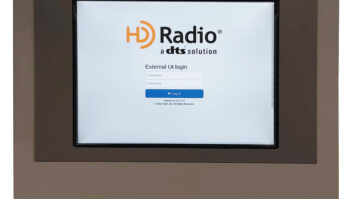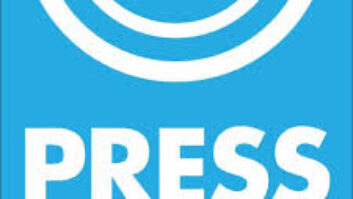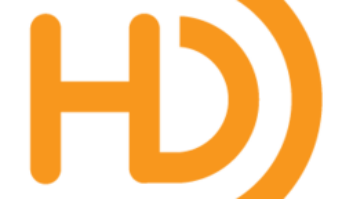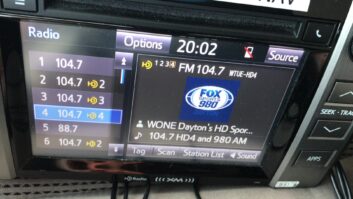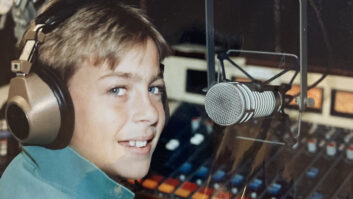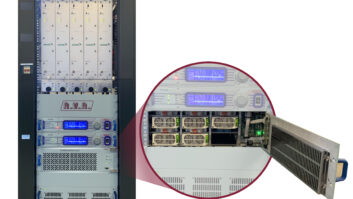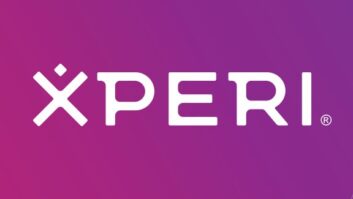The following is a guest commentary from KBIA(FM).
Are you an HD Radio broadcaster? How many HD Radios do you have in your audience? Not as many as you would like, I’m sure.
We at KBIA have made a major commitment to support our investment in HD Radio through a program that includes special premium policies, in-person visits by upper management to listener homes, displays of receivers at station events and extensive on-air promotion — not of HD Radios specifically, but of the expanded programming they offer.
We all know that listeners have more program choices delivered to them in more ways than ever. KBIA’s management knows that to stay viable we need to be producers and distributors of appealing content delivered to our listeners in ways they want and in ways that expand their choices.
We’ll broadcast it, we’ll HD-R multicast it, we’ll stream it, we’ll podcast it!
The editors of Radio World asked me to write about what we’ve learned in talking to our listeners. What follows may be of help to any station that has HD Radio service and wonders how to generate more awareness and enthusiasm.
Information in this story also includes thoughts I’ve shared with engineering colleagues on the Pubtech listserv.
Make them affordable
As KBIA is a public radio station, it is funded in great part by listener donations.
As you probably know, public radio often offers premiums or incentives for donations. But instead of a mug or T-shirt, how about an HD Radio?
Understand that normally the value of a premium shouldn’t exceed around 10 percent of the donation. So if you were going to give out one of those early HD Radios that cost $400, you’d be asking for a donation of $4,000.
Not many people are able to be that generous. Even with $100 radios, that’s still a $1,000 donation.
But we have found the price point — or is that donation point? — at which people will respond for an HD Radio offer. At a $180 pledge level, people are interested in the offer.
Okay, so the premium is half the value of the pledge. But it’s better to think long term. The goal of getting HD receivers into our market is worth the one-time cost.
In addition, we are counting on the donor being more pleased with our program offerings and thus continuing their financial support of the station.
Table 1
RadioShack Accurian Tabletop HD Radio (positioned in a window toward KBIA transmitter)
- With enclosed loop FM antenna — mono analog only
- With C. Crane FM Reflect antenna — five bars full HD-R
- Moved to interior — spotty HD-R with C. Crane antenna
Sangean HDR-1 Table Top Radio (positioned in a window toward KBIA transmitter)
- With factory-supplied telescoping antenna — poor reception, mono analog only
- With wire dipole — better analog, no HD-R
- With C. Crane antenna — HD-R received
- Moved to interior — analog signal only with C. Crane antenna
Sangean HDT-1 Tuner
- With Philips powered tabletop antenna — no HD-R unless the metal front door open
- With big yagi antenna outside — great HD-R
- With C. Crane antenna — great HD-R signal inside interior
KBIA is the only HD-R station in Columbia, Mo. Over the past three years, we have given out some 400 HD Radios as premiums and gifts.
While we have no way of knowing how many people have purchased HD Radios, we do note that about half of the people we talk to indicate that they have an HD Radio they purchased from a local or online retailer.
So our gut feeling is that we have another 100 to 300 HD Radios out there, in addition to the 400 we have directly distributed. Not bad for a station in a small market with a weekly total survey area cume, including counties outside the metro, of just under 31,000.
Most of the radios currently being distributed are Radiosophy’s HD100. Radiosophy offers discounts to broadcasters and in quantity, they also offer discounted shipping rates.
The RadioShack Accurian radios are purchased in smaller lots that are still afforded a small group discount. We’ve also taken advantage of some of the offers found on Ibiquity’s Web site.
One on one
When a supporter in the immediate area pledges for an HD Radio, our general manager, Mike Dunn, calls the donor.
He thanks them for their donation and offers to deliver their radio to them and explain its functions; the majority (two thirds) prefer that the radio just be mailed to them.
During the phone conversation, Mike takes the time to explain what they will get, such as a program grid showing them the additional programs they will be able to receive.
In addition, he explains a few things about the radio such as where the HD-R lock indicator is and how to tune in the additional multicast channels. Our experience has been that some people get a little too anxious to tune the radio and miss the multicast channels because they have failed to let the digital signal lock in.
Mike has observed an increasing number of people who, when he starts to explain the additional programming available, say something like, “I heard that program online, I already know what you are talking about.”
Why go to the trouble to help set up a simple thing like a radio? Well, in addition to explaining the way one tunes the multicast channels, it offers us an opportunity to tell them about the station and to observe their reactions when hearing the new programming.
If a listener is a news fan, the individual is thrilled to be able to hear more of what he or she wants on the additional channels.
Classical listeners react the same way. And they do make their programming preferences clear! About 60 percent are looking for the additional news and information programming, while the rest are looking for more classical music including the additional opera offerings we have made available.
It’s fun to see a new HD-R listener respond to having a radio capable of delivering more of the type of programming they enjoy. Mike also encourages them to tell others of their experience. Spread the word!
How do we promote HD Radio?
Comments we get from our HD-R listeners (and online listeners) confirm the importance of not promoting HD Radios; we promote what people want — the additional programming that the radio delivers to them.
Our on-air promotions and pledge drive pitches stress the new programming they can receive. For the past six months, every piece of mail we have sent out to our listeners has included a program grid showing the content that’s available to them either online or with an HD Radio.
Why are people pledging for HD Radios? Content, content, content!
What are they excited about when they get a chance to experience it? Content, content, content!
It’s our job to deliver it to them in whatever way we can get it to them.
Other than the need to replace an occasional malfunctioning radio, we have received no complaints from our HD Radio users. They are very pleased with the new program choices they now have.
Know your HD coverage
A question posted a few months back on the PUBtech listserv for public radio engineering types asked, “How does your station handle an HD-R receiver premium if the listener discovers that he or she cannot get HD-R?”
I think the answer to the question is more complex than it might seem at first glance.
The best way of advising potential HD Radio buyers is to not tell them to get an HD Radio if they won’t be able to use it. And the way to accomplish that is to know what your HD-R service area is ahead of time.
Those of us who have ventured into IBOC broadcasts quickly learned that our HD-R coverage was far less than that of our analog FM signal. (This is the impetus for the recent push for increasing the digital level for FM IBOC transmissions.)
Our station was an early adopter of HD Radio in 2005. For several months, we had the only receiver to listen to it. As HD Radios started to come down in price and become more available, in 2006 we started multicasting a second channel and a year later added a third.
KBIA has since its beginning in 1972 aimed to serve two audiences: News and information listeners and classical music listeners.
In the past we’ve only been able to partially serve each of these groups. We’ve done news and information during early mornings and late afternoons with classical music mid-days and evenings.
But the news listener wants more news and the classical listener wants more classical music. For years we have unsuccessfully searched for an additional frequency to have a second program service in our market.
The multicast ability that HD Radio affords gives us the chance to deliver more of the programming that our listeners have been wanting.
KBIA-HD2 basically counter-programs what is on KBIA’s main channel (classical when main is news; news when main is classical.
Our third channel offers a new news program called the “Bryant Park Project” from 6 to 9 a.m. The rest of the day is “XPoNential Radio,” a Triple-A format. View our program grid at kbia.org and click on the program schedules.
In order to determine our HD Radio service area, we equipped the cars of three key staff members with HD-R tuners — the JVC KD-HDR1 — and sent them out and about to see what type of coverage we could expect.
If we were taking a trip for business or pleasure, we were also noting HD-R coverage capabilities.
We were interested not only in how our main channel’s HD Radio coverage was doing, but also in the coverage of the HD2 and HD3 channels, which do not have an analog component to fall back on.
These empirically gathered reception data, along with listener reports, continue to be noted and reported to our staff. They can use this information when counseling listeners who express an interest in obtaining an HD Radio.
We advise those who live in marginal HD-R reception areas that the radio might not work with the digital channels. If they are outside our area of known, reliable coverage we advise them that the radio probably won’t work for the HD Radio channels, but we will send it if they want one.
Our customer really is number one
So what about marginal areas? What about HD Radio tuners sent to people who have been told that the radio might not receive our digital signals?
In cases like these, several alternatives have worked.
In a community that was know to be a marginal HD-R reception area, a donor pledged for an HD Radio. The radio we normally send out is a Radiosophy HD100, one of the most affordable radios and one that offers good reception capabilities.
But in some cases, its sensitivity is not good enough. We have addressed several of these situations by offering to exchange the HD100 with a RadioShack Accurian. That radio seems to perform better in marginal signal areas.
If that solution doesn’t work, we advise the listener to try different antenna positions or even a different antenna.
Several months back, one of our major donors wanted to get an HD Radio. We took it out to their home, but we could not get a good signal no matter what radio or antenna we used.
Noting that they had an outdoor yagi antenna because they liked to view TV stations from Columbia 60 miles away, we asked if we could put a splitter in their antenna line. The result: a great HD-R signal and a satisfied donor/listener, who even sent a thank you note saying we had gone above and beyond in our service. (Aw, shucks!)
Our volunteer field tester
Frank, a donor who lives in a marginal reception area — as well as in a metal-sided house — had trouble picking up even our analog signal.
He was interested in getting an HD Radio for his home. As he is a tech-oriented person and a good friend of the station, we sent him home with several radios and antennas to try. He was kind enough to write up his results, which are shown in Table 1.
So sitting inside his metal home, Frank chose the Sangean HDT-1 with the C. Crane antenna.
Remember, this was not a scientific study; but it does add a great deal of information for us to use with other listeners.
In the few cases where none of these approaches work, we offer to exchange the radio for another premium choice that is being offered at (or close to) their pledge level. Keep the donor (our customer) satisfied! The few that have fallen into this category have been very understanding.
Reaching potential buyers
Last, I reflect on the keynote presentation at this year’s Public Radio Engineering Conference, which was given by Paul Jacobs, general manager of Jacobs Media.
He had a rather sobering look at consumers’ knowledge about HD Radio and their potential to become buyers of HD Radios. Yes, I said sobering.
The report found that while 13 percent of the consumers in the study have satellite radio, up 6 percent since last year, only 1 percent have HD Radios, a figure unchanged from the previous year. Houston, we have a problem.
Why are consumers reluctant to buy an HD Radio? Here are some of the key reasons listed in the Jacobs report:
- Don’t know enough about it
- Haven’t heard it yet
- Don’t know anyone who has one
- Confusion about various aspects of HD-R
- Don’t know where to buy one
This confirms our own experience and also our approach that we have taken in promoting HD-R listening.
People are reluctant to purchase an HD Radio because they don’t know enough about it and they haven’t heard it yet. It would be wonderful if people could walk into the local Best Buy store and see a great display of HD Radios, but unfortunately that’s not the case.
The solution for us is to get the HD Radios displayed where our listeners are gathering. One such place is at the donor/sponsor receptions that are held prior to concert events held by our sister organization, The University Concert Series. And yes, we do get inquires about HD Radios based on these events.
Tell us about your own experiences in marketing digital radio to consumers. E-mail [email protected].





